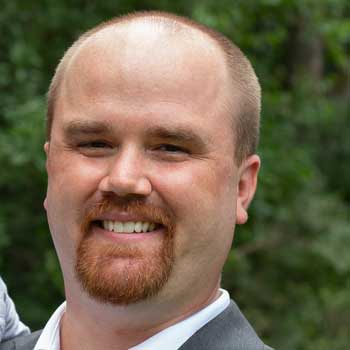 What does it mean to evangelize and how does the preaching of the gospel or “kerygma” of the Church fit in? Pope St. John Paul II noted that any kerygma focused program would be incomplete if it omitted an invitation to ongoing catechesis and full communion with the Church for non-Catholics, and, on the other hand, a return to full communion with the Church for Catholics who have drifted away.
What does it mean to evangelize and how does the preaching of the gospel or “kerygma” of the Church fit in? Pope St. John Paul II noted that any kerygma focused program would be incomplete if it omitted an invitation to ongoing catechesis and full communion with the Church for non-Catholics, and, on the other hand, a return to full communion with the Church for Catholics who have drifted away.
By Brandon Harvey
4 October 2018
Most dioceses in the United States have been discussing and implementing initiatives beyond the traditional Catholic parish programs of Catholic Schools, Catechism Classes, sacramental prep, and RCIA. There are several programs and initiatives being launched that are aimed at the “Kerygma.” What is the Kerygma? What does the Church teach about the Kerygma? This will be our starting point before launching into further topics in subsequent articles on its implementation.
To put it simply: The Kerygma, based on a Greek word, is the Proclamation of the Gospel. This is the initial Proclamation of Christ’s sacrificial death for our sins and His resurrection that brings about a newness of life. The Kerygma is often discussed within the context of evangelization. Some put an unnecessary wall between evangelization and catechesis, as if the two should rarely interact; perhaps this is done by some today as an overreaction of the catechetical focus in the past. Saint John Paul II explains, “there is no separation or opposition between catechesis and evangelization. Nor can the two be simply identified with each other. Instead, they have close links whereby they integrate and complement each other” (Catechesi Tradendae 18).
The Kerygma is meant to “arouse faith” in the individual (Catechesi Tradendae 18). The Catechism of the Catholic Church discusses man’s desire for God (CCC No. 27-30). Within the context of this desire and search for God, the Holy Spirit and the Gospel Kerygma traditionally begin to “arouse faith.” The announcement, through words and the example of the Christian Witness, of the Good News is meant to bring about an initial conversion (General Directory for Catechesis 56).
This is expressed within the process of the Rite of Christian Initiation of Adults (RCIA) during the period of the pre-catechumenate (General Directory for Catechesis 88); participants that have chosen to cooperate with the work of the Holy Spirit within them, as the Gospel Kerygma is gifted to them, then enter into the Order of Catechumens through the liturgical rite that begins the catechumenate stage in the RCIA experience. Just as the hope of the pre-catechumenate is eventual sacramental initiation, so too, the hope of an informal or formal presentation of the Gospel Kerygma is entry into the Church or renewal through the sacraments (Evangelii Nuntiandi 22-23). Perhaps an example from Scripture will suffice.
Acts 8 showcases Deacon Philip cooperating with the Holy Spirit to bring the Gospel to an Ethiopian eunuch. The Ethiopian is reading from the prophet Isaiah. Something stirs within him, and it becomes clear that he is struck by the reading and begins seeking something or someone to quench his thirst. The realization of this thirst grew with the help of the Holy Spirit and Deacon Philip. Within this context the Kerygma is given, “Philip opened his mouth, and beginning with this scripture he told him the good news of Jesus” (Acts 8:35). This initial proclamation must have included some mentioning of the Sacraments of Initiation since Acts 8: 36 indicates that the Ethiopian is aware of the need to be Baptized and is then Baptized (Acts 8:38-39).
Any Kerygma focused program would be “stopping short” of the process if it did not provide an invitation and concrete path toward ongoing catechesis (Catechesi Tradendae 21) and either the Sacraments of Initiation for non-Catholics or a renewal by Confession and Holy Communion for Catholics. The initial blessings discovered in the Proclamation of the Good News must be matured and developed. It only seems fitting to give the final word on this matter to St. John Paul II:
Thus through catechesis the Gospel kerygma [the initial ardent proclamation by which a person is one day overwhelmed and brought to the decision to entrust himself to Jesus Christ by faith] is gradually deepened, developed in its implicit consequences, explained in language that includes an appeal to reason, and channeled towards Christian practice in the Church and the world. All this is no less evangelical than the kerygma, in spite of what is said by certain people who consider that catechesis necessarily rationalizes, dries up and eventually kills all that is living, spontaneous and vibrant in the kerygma. The truths studied in catechesis are the same truths that touched the person’s heart when he heard them for the first time. Far from blunting or exhausting them, the fact of knowing them better should make them even more challenging and decisive for one’s life. (Catechesi Tradendae 25)
*****
Please Support Joy In Truth by sharing on social media.
Image Credit: Saint Philip Baptising the Ethiopian Eunuch by Aelbert Cuyp in 1655 A.D. (Wikimedia Commons).

Brandon Harvey is married and blessed with four children. He studied undergraduate theology and philosophy at Briar Cliff University and received an MA in Theology from Franciscan University. He works as a Catholic speaker, theological consultant, and writer. He has developed the Home Catechesis Podcast and Vlog resource: www.homecatechesis.com
Leave a Reply